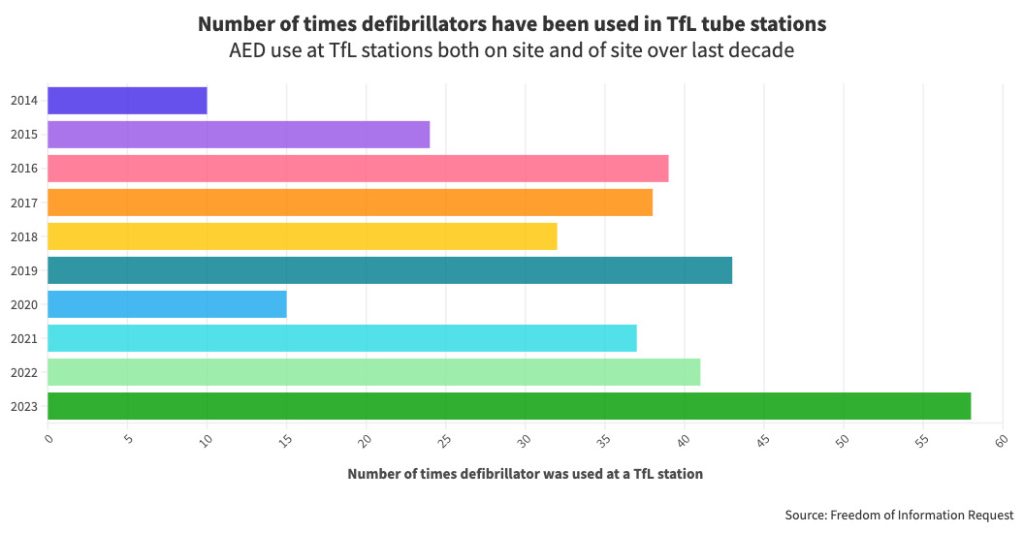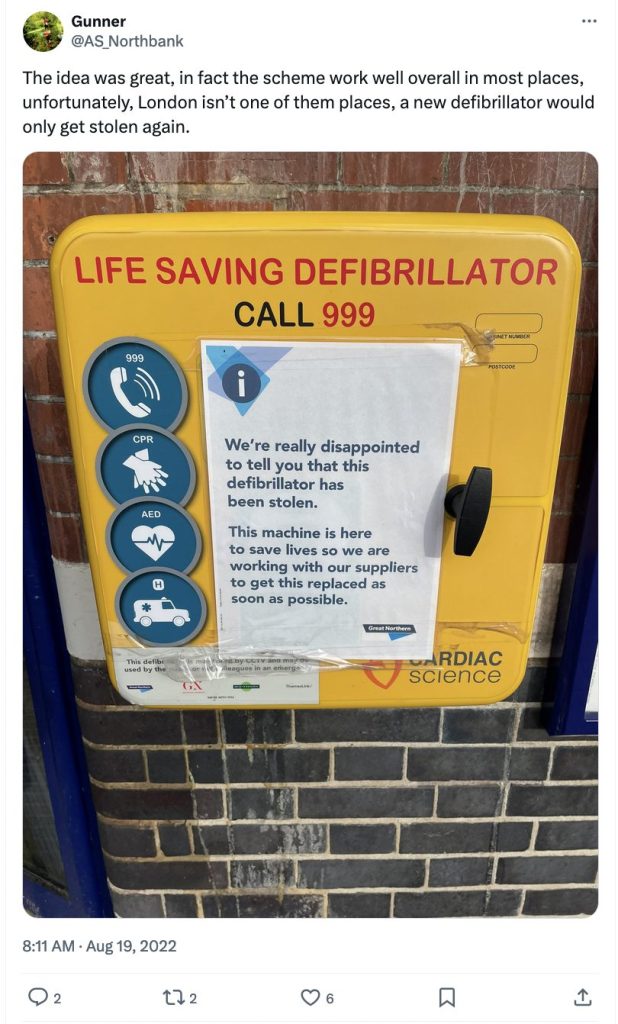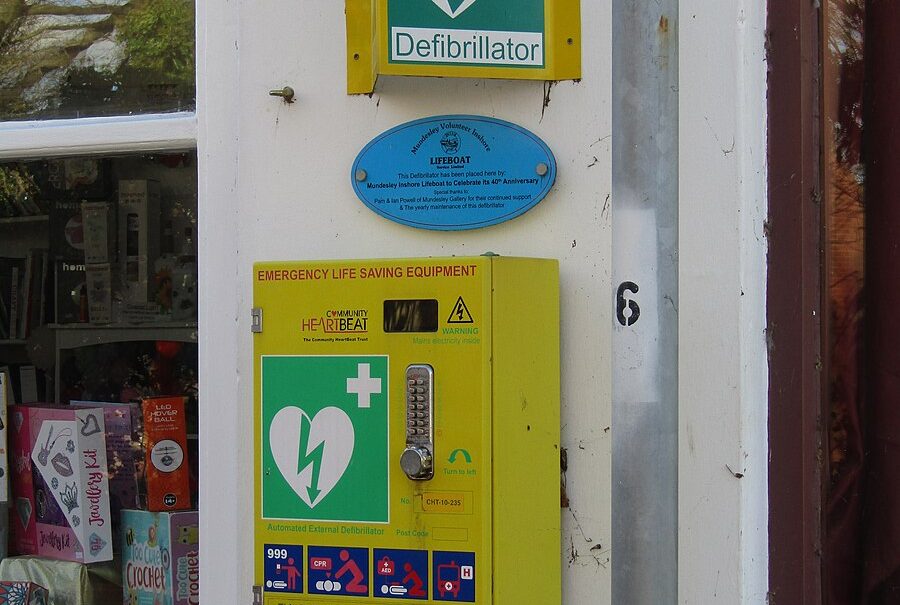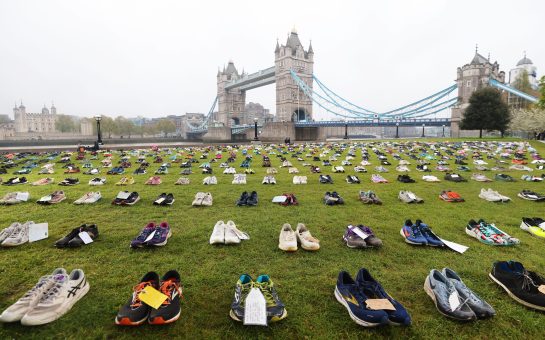Transport for London (TfL) has had to move some Automated External Defibrillators (AEDs) from unlocked cabinets in London Underground (tube) stations because of thefts, new data can exclusively reveal.
A Freedom of Information request sent by SWLondoners to TfL showed that from 2015 to 2023, 24 stations had AEDs, better known as defibrillators, stolen in London tube stations, with Bow Road Station particularly affected.
In the same period two stations had criminal damage to their AEDs, the data supplied by TfL revealed.
A TfL spokesperson said: “All London Underground AEDs should be in unlocked cabinets fully accessible to all, but in instances where there has been a theft, there is high anti-social behaviour and/or stations are not required to be staffed, the AED is sometimes kept in the control room or station office.
“In these instances, a notice is placed in the empty cabinet window.
“We do not hold information on which stations this has occurred.”
This has prompted concerns that such a move could put patients at risk.
Judy O’Sullivan, director of innovation in health programmes at the British Heart Foundation, said: “Every second counts when someone has a cardiac arrest and, alongside CPR, prompt use of a defibrillator is critical in giving them the best chance of survival.
“To put it simply – access to a defibrillator could be the difference between life and death, and anyone who vandalises a defibrillator is putting lives at risk.
“Defibrillators should ideally be accessible 24/7 in unlocked cabinets, ensuring they’re available in an emergency with no risk of delay.”
According to the British Heart Foundation, AEDs are life-saving devices that help get the heart beating when someone has had a cardiac arrest and their heart has stopped by giving a jolt of energy to the heart.
Fewer than 1 in 10 people survive a cardiac arrest outside of hospital, and each minute of delay to defibrillation reduces the probability of survival, according to the National Institute of Health and Care Excellence (NICE).
Last year, data from TfL showed that there were 58 incidents of defibrillator use at TfL underground stations, the highest in a decade.

Abu Bakar, a Tower Hamlets resident, said: “It’s horrible someone would even consider stealing a defibrillator.”
Another commented on X (Formerly Twitter): “The idea [is] great and in fact the scheme [works] well overall in most places, [but] unfortunately, London isn’t one of them places – a new defibrillator would only get stolen again.”
O’Sullivan sought to reassure concerned Londoners and said: “The [British Heart Foundation’s] records from The Circuit, the national defibrillator network, show that defibrillator theft or vandalism is very rare.
“[In fact] we’ve seen that some incidents of reported vandalism are desperate attempts of bystanders to gain access to a defibrillator during an emergency.”
TfL previously explained they took the decision during the pandemic, in collaboration with the British Transport Police (BTP) and the London Ambulance Service (LAS), to remove the AEDs from the cabinets and move them to the station control rooms.

TfL added that at no time was any site left without an AED during the pandemic and where machines have been stolen since, they have been replaced.
Carl Eddleston, TfL’s Director of Network Management and Resilience, said: “We have taken great strides to provide easy public access to defibrillators across the capital.
“They are available at all Tube and London Overground stations, TfL managed river piers, on board all Dial-a-Ride vehicles and our main bus stations.
“We know easy access to this equipment could saves lives, so we work to ensure defibrillators are easily accessible to everyone.”
Eddleston noted that while damage or theft of defibrillators is rare, they work quickly to replace units when it occurs.
Eddleston said: “There are only very rare instances where we have to move these to a secure area due to repeated anti-social behaviour, but our staff are always on hand to provide them quickly if needed.
“We work with our policing partners to tackle such behaviour and continue to trial new ways to ensure this life saving equipment is safe and accessible.”





